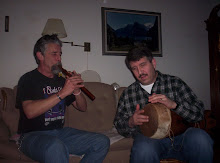Wednesday, April 4, 2007
THE DUDUK
Posted by Bob Lawrence-Markarian 0 comments at 10:37 PM
The Duduk
DudukThe duduk (pronounced [du-duk]) is a traditional woodwind instrument popular in the Caucasus region. It is of Armenian origins.[1][2] This English word is often used generically for a family of ethnic instruments including the դուդուկ or doudouk (previously ծիրանափող or dziranapogh, literally "apricot horn") in Armenia,.OverviewThe duduk is a double reed instrument which has ancient origins, said to be from 1500 to 3000 years old. The earliest instruments similar to the duduk's present form are made of bone or entirely of cane. Today the duduk is exclusively made of wood with a large double reed. Armenian duduks are mainly made from aged apricot wood, although other regional varieties use other materials (mulberry, etc.) The particular tuning depends heavily on the region which it is played. In the 20th Century the Armenian duduk began to be standardized diatonic in scale and single-octave in range. Accidentals, or chromatics are achieved using fingering techniques. The instrument's body also has different lengths depanding upon the range of the instrument and region. The reed, (Armenian: ramish or ghamish), is made from one or two pieces of cane in a duck-bill type assembly. Unlike other double-reed instruments, the reed is quite wide, helping to give the duduk both its unique, mournful sound, as well as its remarkable breath requirements.
Posted by Bob Markarian Lawrence 0 comments at 8:42 PM
Subscribe to: Posts (Atom)
Subscribe to:
Post Comments (Atom)


No comments:
Post a Comment